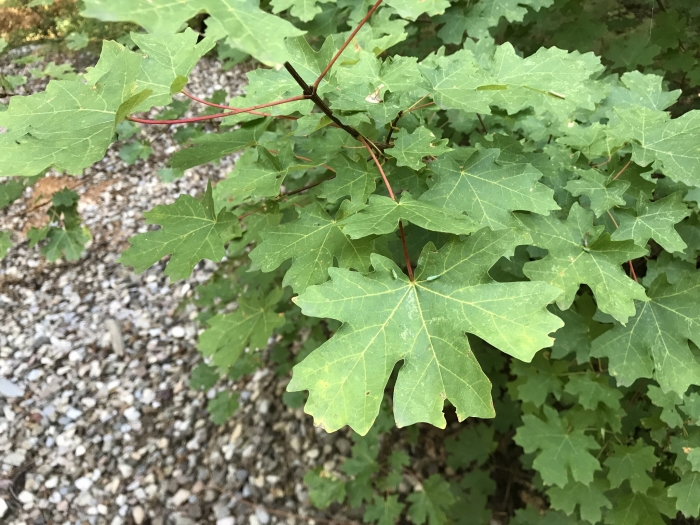Bigtooth Maple
(Acer grandidentatum)
Bigtooth Maple (Acer grandidentatum)
/
/

CK Kelly
CC BY 4.0



















































Estimated Native Range
Summary
Bigtooth Maple is valued for its drought tolerance and adaptability to rocky landscapes, making it a suitable choice for xeriscaping and naturalistic plantings. It is occasionally used as an ornamental tree in residential gardens, parks, and public spaces, where its fall coloration can be quite striking. For successful cultivation, it prefers full sun to part shade and can adapt to a range of soil drainage conditions, from slow to fast. While it is not commonly available in the nursery trade, it is a desirable species for native plant enthusiasts and those looking to create a low-water-use landscape.CC BY-SA 4.0
Plant Description
- Plant Type: Tree, Shrub
- Height: 30-50 feet
- Width: 20-30 feet
- Growth Rate: Moderate
- Flower Color: N/A
- Flowering Season: Spring
- Leaf Retention: Deciduous
Growth Requirements
- Sun: Full Sun, Part Shade
- Water: Medium
- Drainage: Slow, Medium, Fast
Common Uses
Bee Garden, Bird Garden, Butterfly Garden, Deer Resistant, Drought Tolerant, Erosion Control, Low Maintenance
Natural Habitat
Canyon bottoms, mountain slopes, and plateaus in the western-central United States and Mexico
Other Names
Common Names: Western Mountain Sugar Maple, Rocky Mountain Sugar Maple, Canyon Maple, Western Sugar Maple, Wasatch Maple, Sabinal Maple, Uvalde Bigtooth Maple, Big-Toothed Maple
Scientific Names: , Acer grandidentatum, Acer grandidentatum var. grandidentatum, Acer saccharum subsp. grandidentatum, Acer saccharum var. grandidentatum, Acer saccharum subsp. brachypterum, Acer barbatum var. grandidentatum, Acer grandidentatum var. sinusom, Acer nigrum var. grandidentatum, Acer saccharum var. brachypterum
GBIF Accepted Name: Acer grandidentatum Nutt. ex Torr. & A.Gray